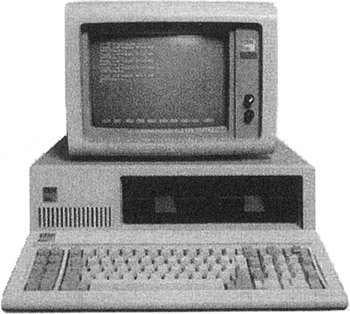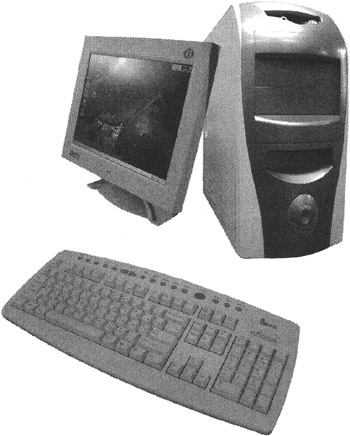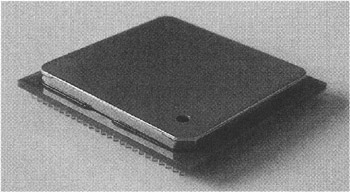Chapter 1: From the Industrial Era to the Information Age
|
| < Day Day Up > |
|
Recent advances in technology have rapidly pushed humanity from an industrial age to a period that can be characterized mainly as informational. Computers gradually have become cheaper and more readily available. Their power and functional capabilities increase at a rapid pace. All these factors allow them to be used in practically every field of human activity. However, efficient usage of modern computers requires both advanced infrastructure and a certain level of user skill. These elements are essential to making the most of the high potential of computer hardware.
The advent of calculating devices during the industrial age was a logical stage of evolution: Science, technology, and industry require a high processing speed of intensive information flows. At first, the problem was alleviated by the creation of data-processing centers. These were based on sophisticated information-processing centers, which were very powerful (for that time) and, consequently, rather expensive. These centers were serviced, maintained, and supported by numerous highly qualified professionals. Recall the dinosaur machines of the 1960s and 1970s, known as mainframes: A typical mainframe was capable of processing 100,000 to 2 million simple 32-bit register-to-register operations per second. The amount of Random Access Memory (RAM) installed on such machines varied from several hundred kilobytes to several megabytes. Although such parameters are laughable today, they were impressive at that time.
A data-processing revolution took place about two decades ago, with the arrival of personal computers oriented toward individuals. The user-friendly interface (both hardware and software) of PCs significantly lowered the level of user knowledge and skill from that required by previous-generation computers.

Figure 1.1: First IBM PC, developed in 1981

Figure 1.2: Contemporary PC equipped with a wireless keyboard
Personal computers are created with relatively cheap components. The central element of the PC is the processor. The first microprocessor was designed and manufactured by Intel engineers, and this historic event began an era of cheap microprocessors. This first processor was named Intel 4004. Parameters of this key component were relatively modest: a clock frequency of 108 kHz, 0.06 MIPS (millions of instructions per second, or 60,000 operations per second), 2,300 transistors, 10 micrometer (μm) technology, a 4-bit bus, and 640-byte addressable memory. Still, it was the first chip used for arithmetical operations, and the computing power of this processor exceeded that of the ENIAC, the world's first electronic computer. The Intel 4004 microprocessor was officially released on Nov. 15, 1971.

Figure 1.3: First processor released by Intel

Figure 1.4: Intel Celeron 2 GHz processor
Since that time, processors have become much more powerful and sophisticated. The number of transistors has increased thousands of times, the clock frequency has grown significantly, and the potential capabilities of the processors have been extended dramatically.
| Processor | Year of release | Number of transistors |
|---|---|---|
| 4004 | 1971 | 2,250 |
| 8008 | 1972 | 2,500 |
| 8080 | 1974 | 5,000 |
| 8086 | 1978 | 29,000 |
| 286 | 1982 | 120,000 |
| 386 | 1985 | 275,000 |
| 486DX | 1989 | 1,180,000 |
| Pentium | 1993 | 3,100,000 |
| Pentium II | 1997 | 7,500,000 |
| Pentium III | 1999 | 24,000,000 |
| Pentium 4 (Willamette) | 2000 | 42,000,000 |
| Pentium 4 (Northwood) | 2001 | 55,000,000 |
Processors with different architecture and power have been the basis for several generations of computers. This allowed for the creation of a variety of computers; it also provided a foundation for transition from centralized to decentralized information processing. Within a short period, billions of computers have been manufactured, ensuring the possibility of decentralized data processing. This factor made possible the wide use of an enormous number of computers in practically all spheres of human activity. As a result, the working style of millions of people has changed dramatically. Even more importantly, the development priorities of contemporary society have changed. Information has become an object of labor, as well as an important and valuable product. In the industrial societies of economically advanced countries, about 90% of total profits are related to information processing, accumulation, and sales. The efficiency of these activities strongly depends on the functional capabilities of computers, which, in turn, are dependent on the advancement of technology, information infrastructure, and the computer literacy of the population. These factors have top priority in the evolution of contemporary society and have attracted close attention from its members.
Processors comprising a billion transistors are expected to be released in 2007. As Intel Chief Executive Craig Barrett mentioned in a report at an Intel Developer Forum (IDF) session, within 15 years, advances in semiconductor technology are expected to enable processor architects to implement products with parameters that include the following:
-
CPU clock frequency of 30 GHz
-
1 trillion instructions per second
-
2 billion transistors
-
Transistor size of 10 nanometers (0.01 micrometers)
| Note | IDF is the largest technological conference for leading developers in which representatives of the mass media participate. IDF sessions are held several times each year in countries around the world. At these sessions, leading manufacturers discuss new and emerging technologies and products in the electronic industry. Traditionally, spring and autumn sessions take place in California. Other sessions often are held outside the United States. |
Technological advances in the field of computing allow continual performance improvement and extend the functional capabilities of contemporary computers. However, the transition from centralized to decentralized data processing, accompanied by steady growth in the number of individuals involved in the process, has given birth to numerous problems — many unknown until recently. Some problems arose with the personalization of computers. This is reflected in the name of the most popular class of computers — personal computer, or PC. Availability, relatively low prices, and individual usage of these devices necessitate personal maintenance of computers. At the same time, the choice and the initial configuration of a particular computer are determined at the time of purchase. Final tuning of hardware and software is accomplished either by third-party specialists or by computer users themselves.
Such an approach ensures an optimal set of system software and application programs. This, in turn, allows efficient solutions to tasks and customization of the interface according to the individual preferences of the computer owner, or end user. However, the personalization of computers compels end users to have some technical background and to constantly improve their computer skills. Without this, it is impossible to optimally tune both hardware and software.
Overall performance, stability, and reliability of the system mainly depend on the quality of hardware customization and software fine-tuning. It is expedient to repeat the procedure of fine-tuning on different computer subsystems when new types of problems need to be solved or after the computer hardware and software have been upgraded.
Using the appropriate customization and running some utilities can compensate for negative changes to certain parameters in the course of long-term operation. These changes are usually related to the natural degradation of electronic components over time. To improve performance, it is useful to periodically upgrade device drivers and their Basic Input/Output System (BIOS).
Operations such as scanning and defragmenting hard drives must be performed regularly. Ignoring these operations results in performance degradation, and, in the worst case, data loss. It is necessary to track all news related to software patches and to upgrades of operating systems and third-party software.
The computer, which currently comprises millions of transistors distributed over hundreds of chips, has become a sophisticated system. It probably is the most sophisticated device designed by human beings. Like any complicated device, the computer has many hidden capabilities. Knowing and rationally using these hidden features of computer components allows them to be implemented to their fullest potential. This allows for the improvement of performance and the extension of the functional capabilities of hardware and software tools.
Thus, humanity has entered an age of informational civilization, which evolves according to its own laws and rules and has its own dead-ends, dangers, advantages, and interesting new capabilities.
|
| < Day Day Up > |
|
EAN: 2147483647
Pages: 111